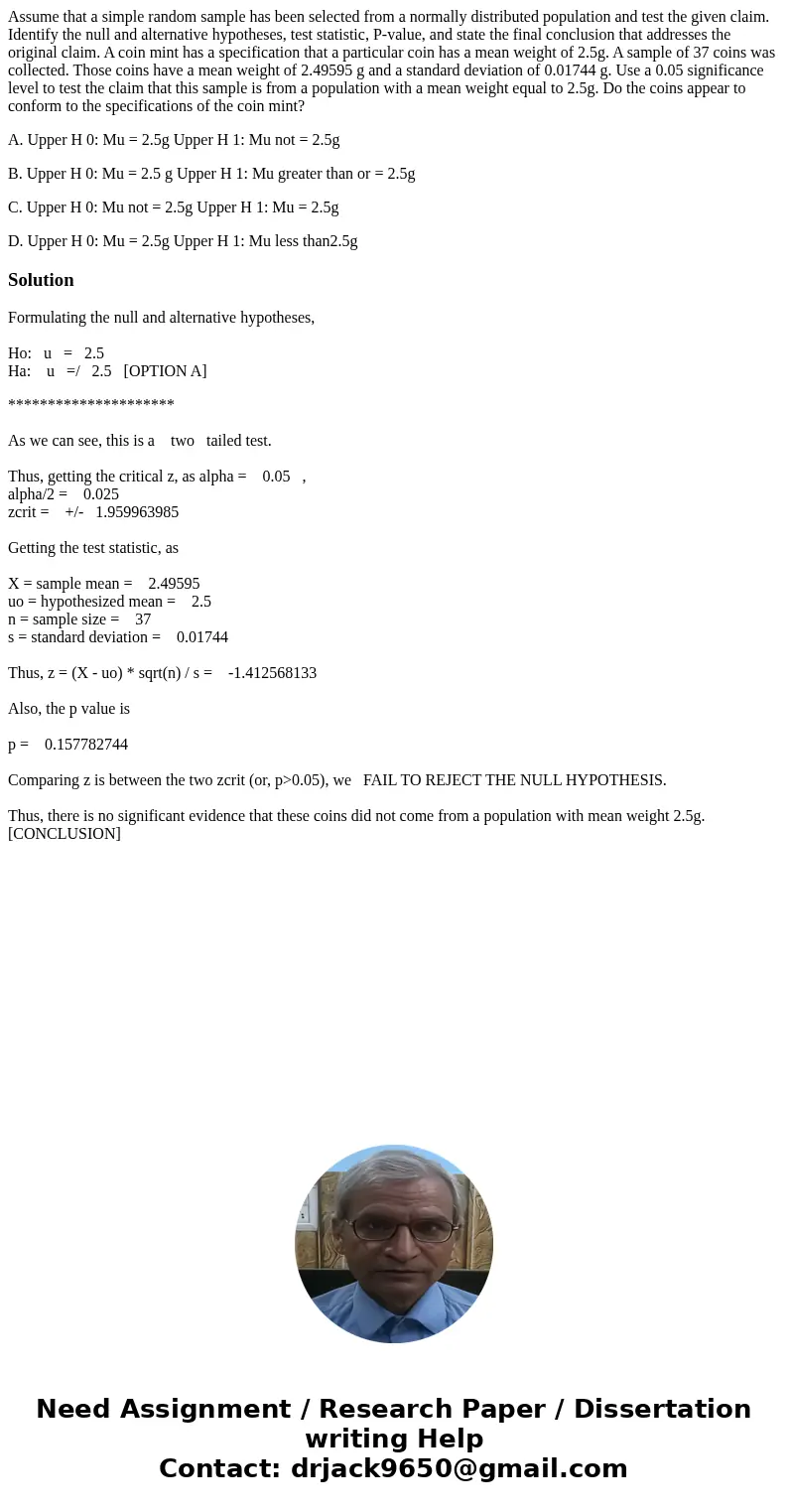Assume that a simple random sample has been selected from a
Assume that a simple random sample has been selected from a normally distributed population and test the given claim. Identify the null and alternative hypotheses, test statistic, P-value, and state the final conclusion that addresses the original claim. A coin mint has a specification that a particular coin has a mean weight of 2.5g. A sample of 37 coins was collected. Those coins have a mean weight of 2.49595 g and a standard deviation of 0.01744 g. Use a 0.05 significance level to test the claim that this sample is from a population with a mean weight equal to 2.5g. Do the coins appear to conform to the specifications of the coin mint?
A. Upper H 0: Mu = 2.5g Upper H 1: Mu not = 2.5g
B. Upper H 0: Mu = 2.5 g Upper H 1: Mu greater than or = 2.5g
C. Upper H 0: Mu not = 2.5g Upper H 1: Mu = 2.5g
D. Upper H 0: Mu = 2.5g Upper H 1: Mu less than2.5g
Solution
Formulating the null and alternative hypotheses,
Ho: u = 2.5
Ha: u =/ 2.5 [OPTION A]
*********************
As we can see, this is a two tailed test.
Thus, getting the critical z, as alpha = 0.05 ,
alpha/2 = 0.025
zcrit = +/- 1.959963985
Getting the test statistic, as
X = sample mean = 2.49595
uo = hypothesized mean = 2.5
n = sample size = 37
s = standard deviation = 0.01744
Thus, z = (X - uo) * sqrt(n) / s = -1.412568133
Also, the p value is
p = 0.157782744
Comparing z is between the two zcrit (or, p>0.05), we FAIL TO REJECT THE NULL HYPOTHESIS.
Thus, there is no significant evidence that these coins did not come from a population with mean weight 2.5g. [CONCLUSION]

 Homework Sourse
Homework Sourse